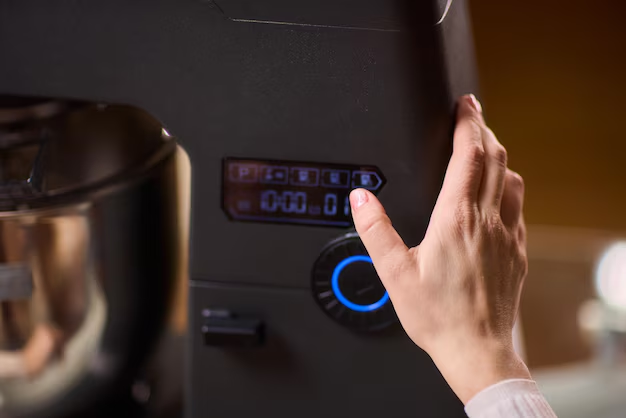Mastering Your LG Refrigerator: How to Turn It Off and More
When you think about turning off your LG refrigerator, what comes to mind? Maybe you’re going on vacation and want to save on energy costs, or perhaps you're doing a thorough cleaning or repair. Regardless of your reason, knowing how to properly shut down your refrigerator can be incredibly useful. In this guide, we'll explore the straightforward process of turning off an LG refrigerator, along with insightful tips and additional context that will empower you to maintain your appliance effectively.
🧊 Understanding the Basics of Your LG Refrigerator
Before diving into the steps, it's helpful to understand the general structure and function of a standard LG refrigerator. Most modern LG refrigerators come equipped with digital displays, energy-efficient compressors, and user-friendly interfaces. These features are designed to make your life easier, but they also mean that turning off your refrigerator involves more than just pulling the plug.
Key Components
Control Panel: Typically located inside or on the refrigerator door, the control panel allows you to adjust settings such as the temperature and different modes like vacation or eco mode.
Digital Display: Shows real-time data on temperature and other settings. This feature helps you confirm that the appliance is turned off or on.
Power Cord: Always ensure that your power cord is easily accessible in case you need to unplug your refrigerator completely.
By mastering these components, you'll be better equipped to handle your refrigerator’s functions, including turning it off.
🔌 How to Turn Off Your LG Refrigerator
Now, let's break down the process step-by-step for turning off your LG refrigerator.
Step 1: Locate the Control Panel
Begin by finding the control panel. This is usually inside the fridge or on its door. Knowing its position is crucial as this is where you'll start the process.
Step 2: Assess the Functions
Look at the mode settings. Some LG refrigerators have a "Vacation Mode" or "Eco Mode," which reduces energy use without fully shutting the appliance off. If you're stepping out for a while, this might be a beneficial option.
Step 3: Use the Power Off Feature
Access the power settings. Many LG refrigerators come with a "Power Off" button or an equivalent in the settings menu. Simply choose this option to safely turn off the refrigerator without needing to unplug it.
Step 4: Unplug, If Necessary
If your model lacks the Power Off feature, you can manually unplug the refrigerator. Just ensure the fridge is not in use, and follow these simple steps:
- Turn off breakers: If accessible, switch off the breakers that supply power to the refrigerator.
- Unplug the unit: Carefully pull the plug from the outlet, ensuring no damage to the cord.
🔔 Tip: After you have turned off your appliance, make sure to leave the doors slightly ajar to prevent mold and odor build-up during extended periods of inactivity.
🛠️ When and Why to Turn Off Your Refrigerator
Understanding when and why it's beneficial to turn off your refrigerator can help you make more efficient decisions regarding appliance use.
Routine Maintenance
Regular cleaning and maintenance often require turning off your refrigerator. This ensures safety and thoroughness when wiping down shelves, drawers, and interiors.
Repairs and Troubleshooting
When addressing mechanical failures or troubleshooting issues, switching off the power is essential for safety.
Energy Savings
For those interested in reducing their carbon footprint or energy bills, there are times when turning off the fridge, like during vacations or seasonal use, can be economically wise.
🔍 Exploring Related Features
An LG refrigerator is packed with features that complement your cooling experience. While discussing turning off your refrigerator, let’s explore some functionalities that help optimize use without complete shutdowns.
Vacation and Eco Modes
- Vacation Mode: Keeps the appliance at minimal functioning levels to conserve energy.
- Eco Mode: Balances energy use while maintaining cooling performance.
Smart and Energy-Saving Technologies
Many LG models are equipped with smart features like WiFi connectivity, enabling remote control and monitoring. This allows you to adjust or turn off your refrigerator even if you’re not physically present.
⚙️ Maintenance Tips for an Efficient Refrigerator
A well-maintained refrigerator operates more efficiently, reducing the need for frequent shutdowns. Here are some maintenance tips for optimal performance:
- Regular Cleaning: Keep your refrigerator clean inside and out to prevent diseases and enhance cooling efficiency.
- Inspect Door Seals: Ensure door seals are intact and functional to maintain temperature control.
- Organize Contents: Properly organize your fridge to allow airflow, which aids efficient cooling.
♻️ Energy-Saving Practices
Reducing energy usage doesn’t always mean turning off your refrigerator. Here are some habits that can help you conserve energy while keeping the appliance running:
- Set Appropriate Temperatures: The ideal temperature range for a fridge is around 37°F (3°C) and freezer around 0°F (-18°C).
- Minimize Door Opening: Frequent door opening causes temperature fluctuations, making the compressor work harder.
- Load Efficiently: Avoid overloading your refrigerator which impedes airflow and reduces cooling efficiency.
Practical Tips Summary
Here’s a quick visual summary of steps and considerations when turning off your LG refrigerator:
| 🔎 Consideration | ✅ Steps |
|---|---|
| Type and Model | Check the user guide to understand model-specific instructions. |
| Control Panel Use | Utilize available settings like “Power Off” to safely shut down. |
| Manual Shutdown | Unplug carefully when direct panel options aren't available. |
| Maintenance Needs | Clean regularly and inspect for any operational faults. |
| Energy Efficiency | Use Vacation or Eco modes for times of prolonged inactivity. |
Understanding how to properly turn off and manage your LG refrigerator improves appliance longevity, enhances safety, and empowers you with the knowledge to handle your home appliances responsibly. Navigating through various features makes you not just a user, but a proficient manager of your kitchen's essential equipment. With this expertise, you’re well-equipped to improve both the efficiency and functionality of your home environment.
